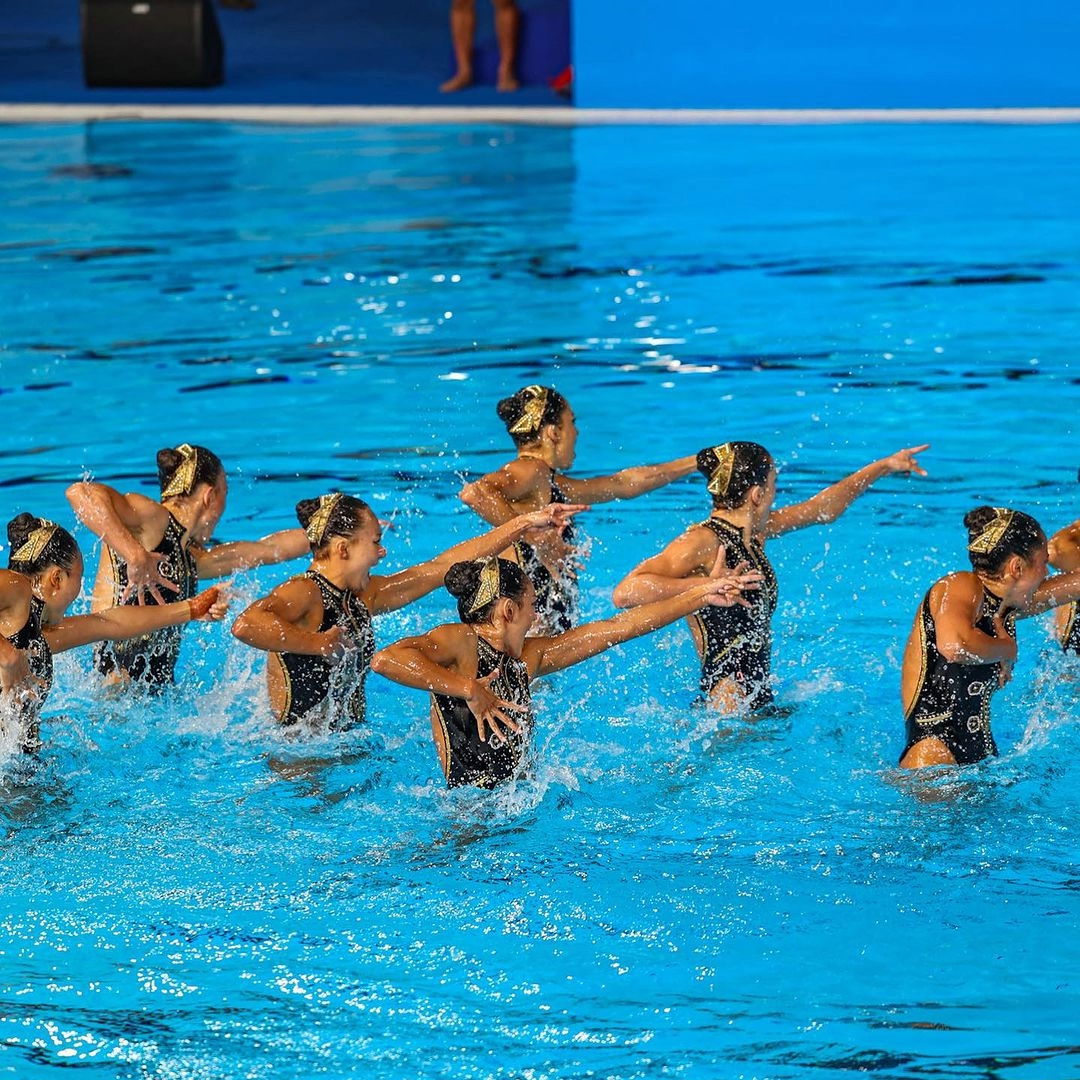

Imagine diving into history, where ancient swimmers glided through natural waters, compared to the meticulously engineered pools of today. Swimming has transformed from a timeless pastime into a spectacle of precision and skill. As technology advanced, so did the intricacies of the sport. The ultimate stage for these aquatic athletes is now the Olympic pool—a masterpiece of design and engineering. It’s said that “The best way to predict the future is to create it,” and that’s precisely what these pools do, setting the stage for record-breaking performances. Join us as we explore the fascinating evolution of the Olympic swimming pool, where every detail is fine-tuned for greatness.
Watch What’s Trending Now!
Olympic Pool Specifications: How are they made?
Picture a vast expanse of crystal-clear water, a stage meticulously designed to showcase the peak of human aquatic ability. The Olympic pool, spanning 50 meters in length and 25 meters in width, covers an impressive 1250 square meters. With depths ranging from 2 to 3 meters, it caters to a variety of swimming events.
ADVERTISEMENT
In this arena, 8 to 10 lanes, each 2.5 meters wide, are set to provide optimal conditions for record-breaking feats. The pool contains a staggering 2,500,000 liters of water, kept at a perfect 25–28 °C (77–82 °F) to ensure swimmers perform at their best. Illuminated by a minimum of 1500 lux (140 foot-candles), the pool offers ideal visibility for both athletes and spectators.
📍Stonehaven Open Air Pool, Aberdeenshire
The UK’s northernmost lido was built to Olympic specifications. It’s filled with filtered water pumped in from the North Sea (and is mercifully heated to a balmy 29C). The site is volunteer-run and also hosts midnights swims pic.twitter.com/ghUnNMd56Y
— Time Out London (@TimeOutLondon) July 21, 2021
Every aspect of the pool is regulated by the International Olympic Committee (IOC), guaranteeing adherence to strict standards. This ensures the pool is not just a venue, but a meticulously crafted stage for the world’s elite swimmers to chase glory and set new records.
ADVERTISEMENT
Lane Assignment System
The intrigue of Olympic swimming extends beyond the shimmering surface of the pool. Each swimmer’s lane assignment is a calculated decision, reflecting their speed and strategic prowess. The fastest competitor, often the favorite for gold, glides through the coveted lane 4. This lane, nestled in the heart of the pool, offers a competitive edge with its calmer waters and clear view of rivals.
ADVERTISEMENT
Lanes 3 and 5 flank this prime spot, reserved for the next swiftest swimmers, while lanes 1 and 8, on the outer edges, are designated for the slower competitors. These outer lanes often face higher water resistance, adding an extra layer of challenge.
Top Stories
Simone Biles and Jonathan Owens Receive PETA Letter Over Pet Care Concerns

Controversial Crew Chief Finds Fresh Start With 17-Yo NASCAR Team

Footage Surfaces of Puka Nacua’s Brother Samson Slapping Fan After Arrest for Allegedly Stealing Lakers’ Adou Thiero’s SUV

NASCAR Team Owner Demands Charter-Like Deal for Financially Struggling O’Reilly Series

Chiefs QB Patrick Mahomes Loses Faith in Kansas City With Cowboys Decision as FOX Host Calls Out Clark Hunt’s Ownership

Carlos Alcaraz’s Split With Coach Resulted From ‘Major Disagreements’ With His Father

Why this meticulous arrangement? It’s all about giving the best a fair shot at glory. The middle lanes offer smoother waters and a strategic vantage point, essential for those poised to break records. Meanwhile, the outer lanes serve as a proving ground for those with slimmer chances of medaling.
In the world of Olympic swimming, every detail matters. From the construction of the pool to the assignment of lanes, everything is designed to ensure the ultimate test of skill and endurance. It’s a fascinating blend of science, strategy, and pure athleticism, making each race a thrilling spectacle.
ADVERTISEMENT
History and Evolution of Lane Systems in Modern Swimming Pools
Moving ahead, the lanes assigning system has largely been evolved. Earlier 8-lane pools with an approx depth of 7 ft were in use for the Olympics. However, from the Bejing Summer Olympic 2008, the authority introduced premium 10-lane pools to have more space for the swimmers.
ADVERTISEMENT

An ultra-smart idea known as the buffer lane has gradually taken hold in Olympic pool design. These special lanes, situated on the outermost edges of the pool, are not assigned to competitors. Instead, they serve a critical function: minimizing wave interference and reducing water resistance that can impact performance. By absorbing and dissipating the waves generated by swimmers, buffer lanes ensure that the water remains as calm and undisturbed as possible for those competing in the adjacent lanes.
ADVERTISEMENT
Factors Influencing Performance within a Pool
Diving deeper into the science of performance, several critical factors significantly influence an athlete’s success in the pool. The primary determinant is, unsurprisingly, time sensitivity. The faster you are, the better the lane assignment in the next race – it’s a straightforward rule. Speed earns you the coveted middle lanes, where every advantage can shave off precious milliseconds.
Secondly, the meticulously designed Olympic pool, with its precise specifications, plays a crucial role in enhancing performance. Even an average competitor can experience a seamless race thanks to the thoughtful engineering that minimizes resistance and wave interference.
ADVERTISEMENT
So, what’s your take on the perfect Olympic pool configuration? Do these carefully crafted conditions truly level the playing field, or is there room for improvement? Share your thoughts in the comments below – we’d love to hear your perspective on this blend of science and sport.
ADVERTISEMENT
ADVERTISEMENT
ADVERTISEMENT

